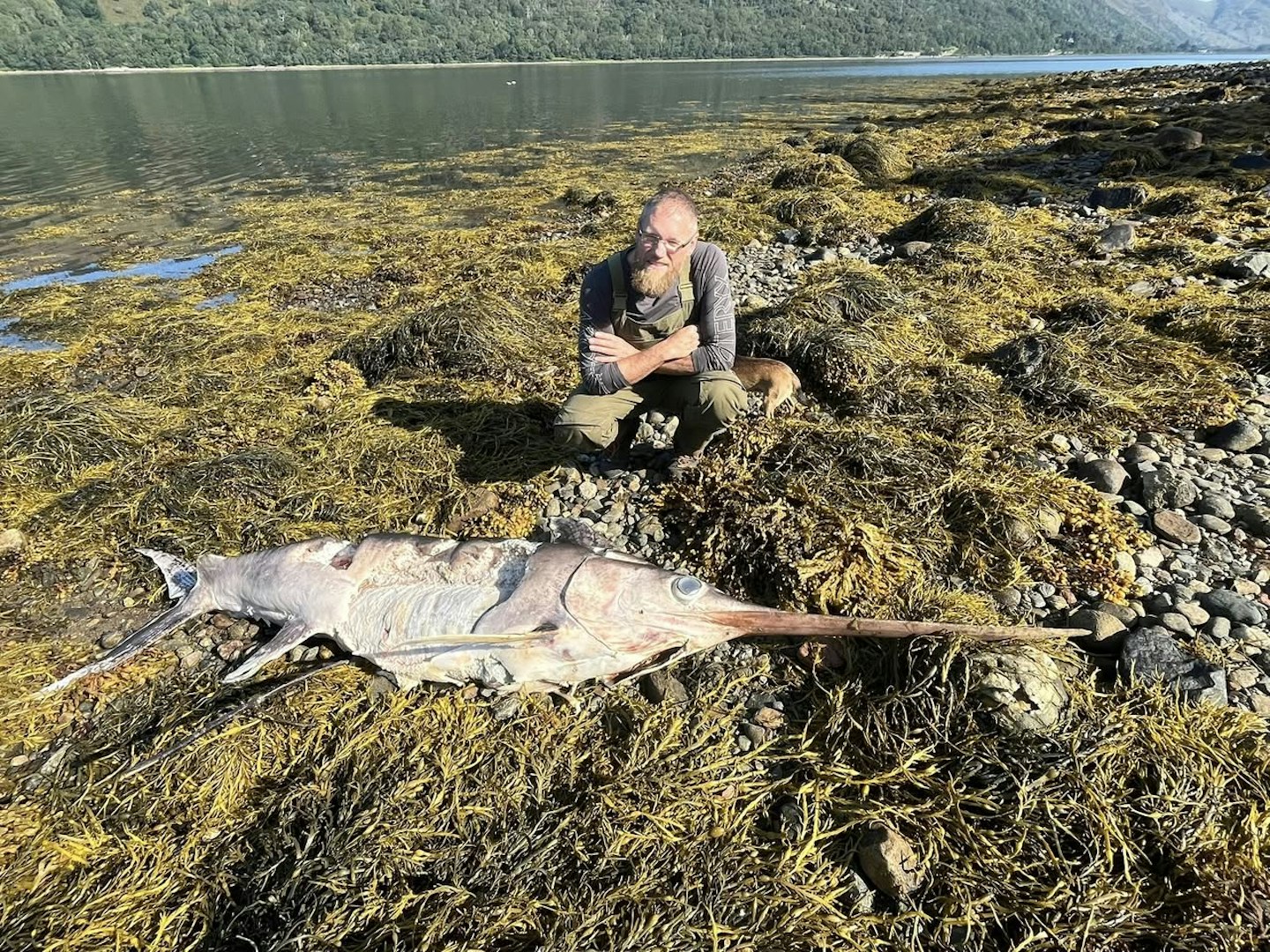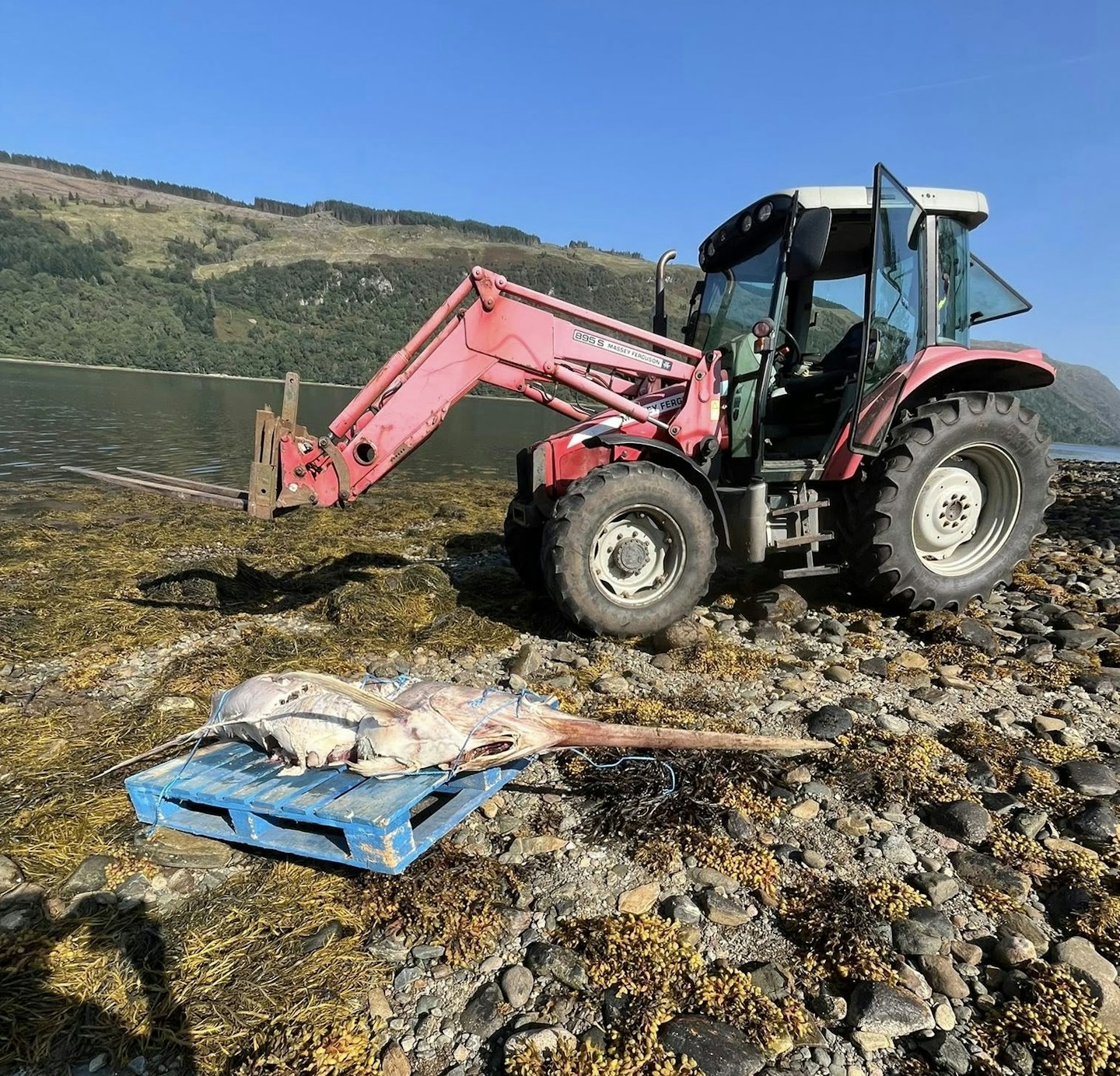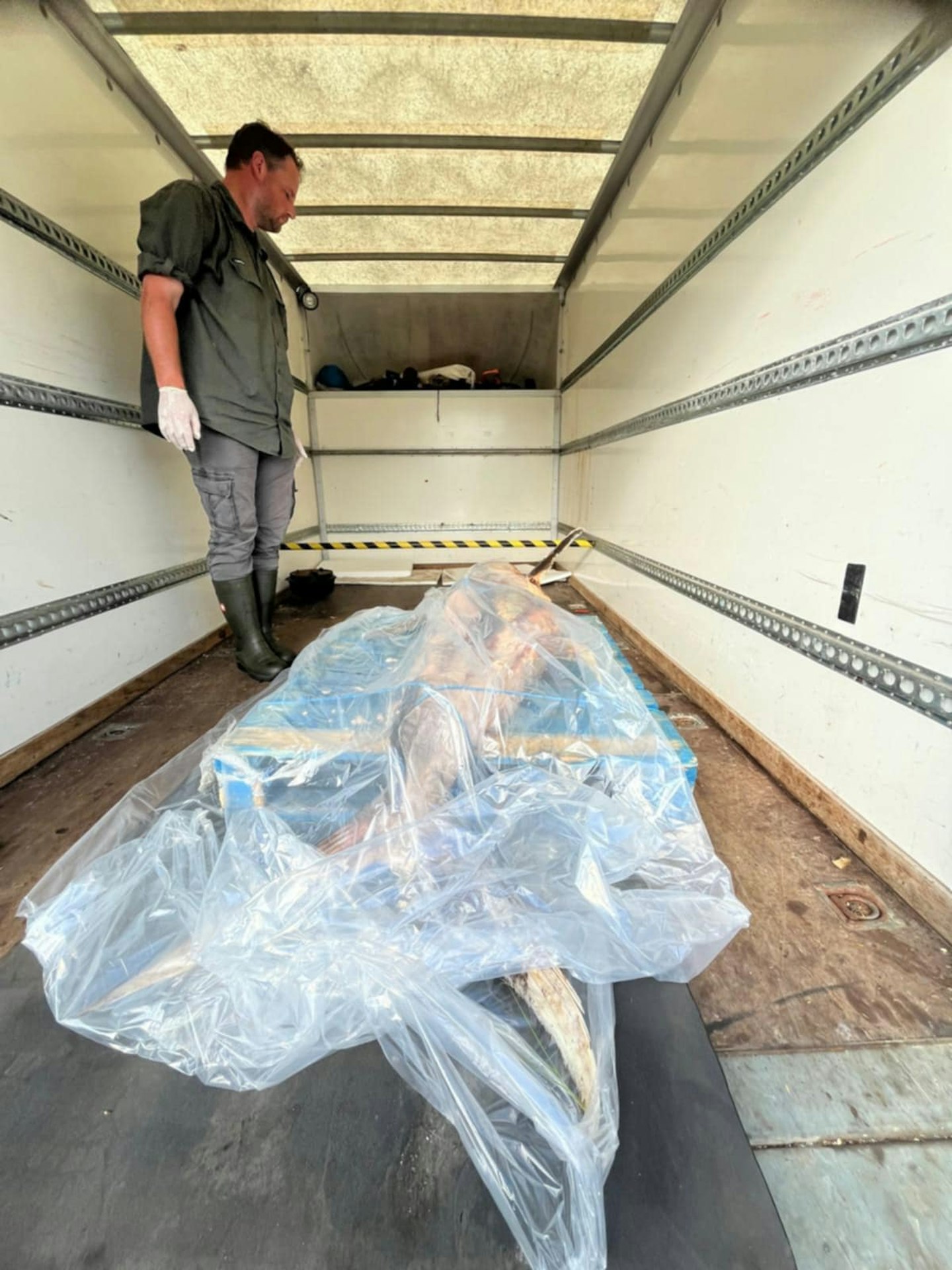People around the world are often familiar with Scottish folklore surrounding the Loch Ness monster and various other supposed creatures that are said to reside in the large waters around the country. There are those who firmly believe there are large creatures existing in these lochs and those that pass it off as mythical, with many dedicating their whole lives to trying to prove it one way or another.
Only this very week, Jason Ferguson, received a report that someone had found a three-metre-long swordfish washed up along the banks of Loch Fyne, on the grounds of the Ardkinglas Estate he manages. Intrigued, but not completely convinced, he made his way down to the area only to find the reports were in-fact true, and there was indeed a swordfish on the bank. An exceptionally unusual occurrence with so few of these fish ever spotted around Scotland, raising the question what else could be lurking in the depths?

"An estate volunteer named Graham McKirdy had been informed by the Scottish Marine Animal Stranding Scheme (SMAAS) that a swordfish had been reported on the banks of loch Fyne. He had a dropped pin of the exact location, so we curiously headed down to the exact spot ," Jason told us.
"I have had similar reports of unidentified carcasses in the past, and fully expected to find the remains of a seal or porpoise as we do get them frequenting the loch which we unfortunately find washed up occasionally," he added.
As the pair descended on the area, they were shocked to discover that there was indisputably a swordfish laying on the banks. Loch Fyne is around 40 miles long, making it Scotland's longest sea loch, and with Jason finding it about some 38+ miles inland, it highlights just how far this fish had travelled off course before he found it, adding to the highly unusual circumstances of this encounter.

Looking over the fish, it appeared it had died fairly recently. There wasn't any real smell and apart from where the seagulls and other scavengers had obviously taken what they could, which left more questions as to how long it might have been in the loch before it ended up on the shoreline.
"The fish wasn't stinking so it had obviously swam up the loch to where we had found it. I doubt it would have made it so far up the loch just drifting and if it did, there wouldn't have been anything left of it," Jason explained.
"We decided to call the National Museum of Scotland to see if they were interested in taking the specimen, and they were very obliging with someone due to collect it the following morning."
"The fish was three-metres-long and heavy, but we managed to get a tractor down the fish and load it onto a pallet so it could be taken to the roadside, where the museum could load it onto their truck," he said.

"To begin with I didn't realise just how unusual it was to find a fish like this, but after some research and speaking to the expert from the museum and doing my own little bit of fact finding, it seems only a handful have ever been spotted around Scotland, certainly nowhere near this far inland."
Swordfish are more usually associated with tropical climates and warmer seas. After speaking with museum experts, their best guess was that a natural change in the direction of the Gulf Stream this year, potentially pushed the baitfish and squid that swordfish feed on further inland, and as a result, the sword likely found its way into the loch, but was then unable to find its way back out and before exhausting itself.
"I have worked here for over 30 years and it is definitely one of the most unusual things I have found on the loch. I thought I had seen everything, but yet again this wilderness continues to surprise me" he concluded.

Subscribe to Angling Times magazine today. Choose a Print+ Subscription and you'll get instant digital access and so much more. PLUS FREE UK delivery.
